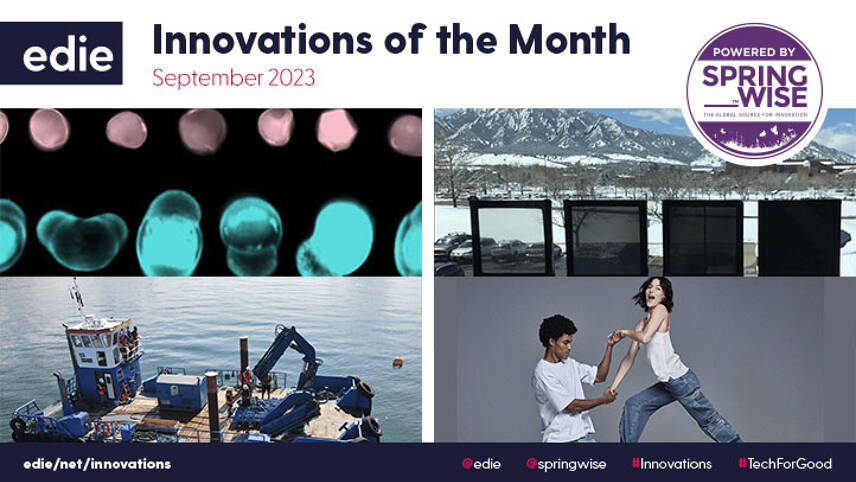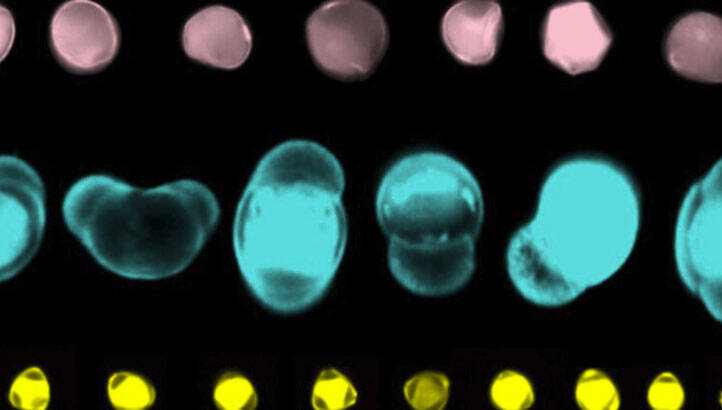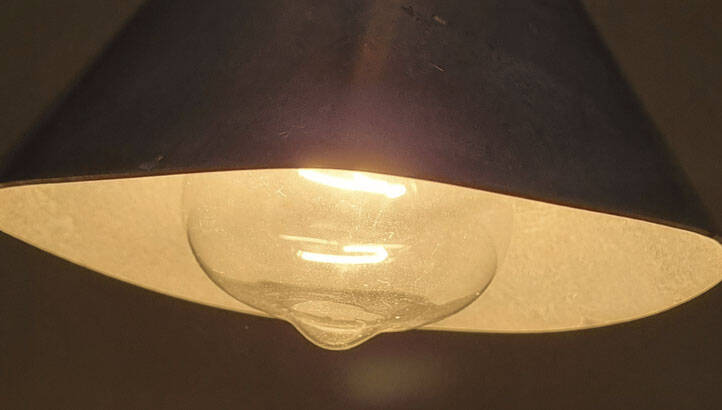Register for free and continue reading
Join our growing army of changemakers and get unlimited access to our premium content

The end of the summer may conjure to mind wistful thoughts of forests with leaves turning golden. But a different type of underwater forest, made of seagrass, plays a particularly important role in regulating the world’s carbon cycle. In our first innovation this month, an automated robotic planter is being used to restore this critical habitat.
A feature of the summer that many will not miss is the scratchy eyes and runny noses of hay fever. Despite this irritation, airborne pollen provides us with vital clues about how the environment is changing in the face of climate change. In our second innovation of the month, scientists are harnessing deep learning artificial intelligence to gain deeper environmental insights from pollen.
Back indoors, many readers will enjoy waking up to a morning brew of coffee. But did you know that changing growing conditions are driving deforestation as growers seek out the optimum conditions for premium beans? In our third innovation, a Dutch company has developed a ‘coffee-free’ alternative to coffee made using non-tropical, natural ingredients.
While you sip your ‘coffee-free coffee’, you may be enjoying the feel of a comfy pair of jeans. However, there is a good chance that those jeans will be made from stretch denim that contains environmentally unfriendly synthetic fibres like spandex. To tackle this, our fourth innovation is a jeanswear brand that uses biodegradable, elastic denim made using natural rubber.
To wake yourself up fully, you may want to let the morning light flood in through the windows. But in hot conditions, standard windows typically let in too much heat, creating uncomfortable conditions and boosting the demand for power-guzzling air conditioning. Our penultimate September innovation is a smart window that can be adjusted by the user to let in the optimum amount of light depending on the conditions.
Finally, as the days grow darker, you are likekly to turn on the lights more frequently. But what if the heat from those lights could activate a catalyst that breaks down harmful infoor air pollutants? This is the idea behind our final innovation, which was laid out recently in the American Chemical Society’s (ACS) fall meeting.
Read on for edie and Springwise’s six hand-picked green innovation stories of September 2023.
Seagrass restoration at scale
Image: Land & Water
Seagrass meadows act as important carbon sinks all over the world, capturing carbon up to 35 times faster than tropical rainforests. However, they are on the decline, disappearing at a rate of 110 square kilometres per year. Environmental engineering company Land & Water is looking to reverse this trend with its innovative patent-pending Automated Seagrass Planter (ASP).
The technology, which was developed in partnership with Project Seagrass and Swansea University, allows for efficient seagrass restoration on a large scale, with the company’s CEO claiming that the ASP can plant thousands of plants per day.
The planter precisely places biodegradable, hessian sacks filled with sand and seeds at pre-assessed locations selected to optimise survival and growth rates. These planting sites are located in sub-tidal and inter-tidal areas with a water depth of up to six metres. The ASP is designed to minimise environmental impact during planting while spacing seagrass ‘plugs’ at optimal distances from each other to minimise competition for resources and promote health growth.
In order to provide flexibility for projects in different parts of the world, the planter can be adjusted to work with different local species of seagrass. Recent tests of the device were successful yielding promising results that demonstrate the ASP’s ability to enhance restoration efforts.
AI-powered pollen analysis
Image: University of Exeter
When we think of global warming, the itchy eyes of allergy season are unlikely to be the first thing that springs to mind. But, experts believe that worsening climate change means longer pollen seasons – and more runny noses for hay fever sufferers.
Researchers have, to date, analysed pollen in the air manually, which is a highly laborious task. Now, to monitor the growing rates of pollen and better understand environmental change, scientists at the University of Exeter and Swansea University are turning to cutting-edge technologies –including imaging flow cytometry and deep learning artificial intelligence (AI) to create a system able to spot and categorise different pollens much more quickly.
As well as helping us to better understand our changing environment and shifting biodiversity levels, the AI-powered system could also help those with severe pollen allergies better manage their symptoms. Understanding when certain types of pollen are most prevalent, such as the grass pollens that so many are allergic to, would help to improve pollen forecasting so that individuals can limit exposure or take medications accordingly.
Coffee… without the coffee
Image: Northern Wonder
Global demand for coffee, particularly certified and organic products, continues to grow. At the same time, climate-change-induced weather alterations are making production more challenging. Unusually, both Brazil and Colombia experienced drops in production in the coffee year 2021 to 2022 due to unfavourable weather conditions. Coffee plants are particularly sensitive to changes in climate, causing coffee growers to frequently expand further into the rainforest when current arable locations become less suitable for growing.
As lovers of coffee who hate the impact its production has on the world’s forests, Dutch food technologists Northern Wonder have created a coffee made from non-tropically grown natural ingredients. Using combinations of roasted cereals, roots, fruits, and legumes, the company produces both caffeinated and non-caffeinated versions of its coffee.
Currently, two products are available. A filter blend and industrially compostable capsules that are compatible with Nespresso machines are for sale on the Northern Wonder website. An espresso blend and cold brew versions are both in development, and Northern Wonder has two patents pending for its technology.
The full ingredient list for each coffee is listed online, and the Northern Wonder team is clear that the current products are only the first batch. The company ships worldwide and has plans to offer the products via retail partners at a later date.
Biodegradable stretch denim
Image: Coreva Design
Stretch denim is a popular material for clothing items. In fact, it is so popular that it has come to account for 80% of the ladies’ jeans market. The material is popular because it offers women tighter fitting jeans that are comfortable and retain their shape when worn repeatedly. However, the incorporation of synthetic fibres like spandex into stretch denim raises important sustainability challenges, such as microplastic pollution, non-biodegradability, and limited recycling options.
Now, denim producer Candiani Denim has launched its own jeanswear brand, Coreva Design, that uses natural and biodegradable fabric that also stretches. The collection is based on CorevaTM technology, which is patented exclusively by Candiani Denim. The ‘stretchiness’ of the denim material comes from the elastic properties of a plant material obtained from natural rubber.
By avoiding plastics and using natural materials, Coreva Design’s stretch denim will biodegrade in under four months rather than 200 years or more. What is more, all of the brand’s fabrics come from regenerative farms.
Smart windows for heat and light control
Image: Tynt
While the home has undergone technological smart advancements with heating, storage, electricity, and other things, windows have fallen behind.
Windows account for about a third of heat loss in a home, and during hot periods they often let in too much solar heat, which is often compensated for with energy-intensive cooling systems. And even with the right window insulation, it’s rare that lighting is “just right” for the occupant’s comfort when dealing with shifting natural light sources.
This is where Tynt comes in. The concept is simple: windows that can regulate the amount of light that is let in based on what’s available and the operator’s desires. This is accomplished by using patented Reversible Metal Electrodeposition (RME).
The technology uses a small electric current to influence the properties of a metal film that rests in between the windowpanes – affecting how opaque the window appears and how much energy it absorbs. By either regulating the current up or down, the opacity of the window will range from completely transparent to truly blacked out. With this system the heat regulation of the house is also far more efficient – requiring just one volt to function, according to the company.
Tynt is not on the market yet, but the company is hoping to commercially launch the product next year.
Lampshade coatings that clean the air
Image: Minhyung Lee
Indoor air pollution in the US can be up to five times worse than outdoors. Pollutants can be released from building materials, furnishings, air fresheners and cleaning products, and can also come in from outside via windows and doors. This issue affects much of the Global North.
To tackle the issue, scientists have designed catalyst-coated lampshades that transform indoor air pollutants into harmless compounds.
According to the project’s principal investigator Dr. Hyoung-il Kim, the shades target volatile organic compounds (VOC), including acetaldehyde and formaldehyde, which account for most indoor pollutants. These compounds are released by everyday objects and activities, including paints, cleaners, air fresheners, plastics, furniture and cooking.
Traditional methods to remove VOCs require periodic replacement or additional equipment. Kim’s team aims to take a simpler approach by only using a visible light source that produces heat – like lightbulbs – and a lampshade coated with a thermocatalyst.
The team coated the inside of an aluminium lampshade with the catalyst and placed the shade over a 100-watt halogen bulb in a test chamber containing air and acetaldehyde gas. The shade was heated to 250 degrees Fahrenheit when turned on – warm enough to activate the catalyst. The VOC was completely oxidised and converted into a harmless amount of carbon dioxide and water. The proposed thermostatic system offers a sustainable and viable method that does not need any additional technology.
The researchers presented their results at the American Chemical Society’s (ACS) fall meeting. Kim’s group is turning to less expensive substitutes for the thermocatalyst, which was initially made using titanium dioxide and platinum, and is also finding ways to extend the concept to LEDs and develop a hybrid catalyst that can utilise all light sources, including UV and visible light, as well as waste heat.
Springwise is edie’s innovation content partner. It is the global innovation intelligence platform for positive and sustainable change. With a growing database of 11,000+ innovations, Springwise is the place of record for innovation that matters. Springwise.com.








Please login or Register to leave a comment.